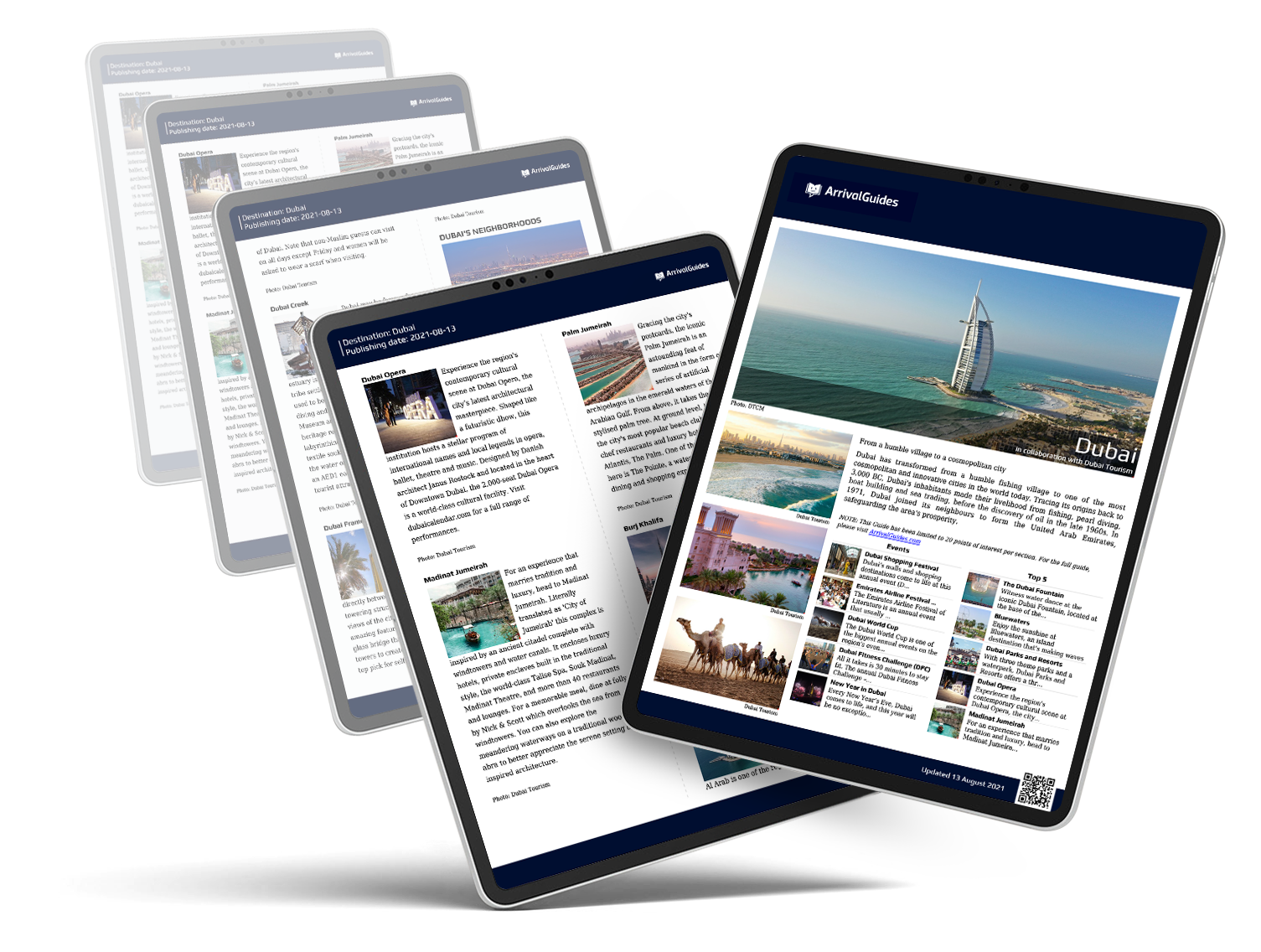
-
![Aerial view of Verona with the Verona Arena in the center. Veneto, Italy]() Provided by: D-VISIONS/Shutterstock
Provided by: D-VISIONS/Shutterstock

Our travel guides are free to read and explore online. If you want to get your own copy, the full travel guide for this destination is available to you offline* to bring along anywhere or print for your trip.
*this will be downloaded as a PDF.Price
€4,95
Arena di Verona
The guide was updated:Arena di Verona is a Roman amphitheatre from the 1st century, right on Piazza Brà. Still used today, mostly for opera in the summer, which draws big crowds and makes the whole thing feel surprisingly alive for something nearly 2,000 years old.
Useful Information
- Address: Piazza Bra 1, Verona
- Website: www.arena.it/en
- Phone: +39 045 800 5151
Digital Travel Guide Download
Our travel guides are free to read and explore online. If you want to get your own copy, the full travel guide for this destination is available to you offline* to bring along anywhere or print for your trip.
*this will be downloaded as a PDF.Price
€4,95

Piazza Brà is the biggest square in Verona and a natural starting point for exploring the city. Yes, it’s touristy—but also a good place to sit with a coffee and take it all in. You've got the Arena on one side, cafés and grand buildings on the other, and a small park in the middle with benches, trees, and a fountain. Handy spot to pause, especially if you're heading to the Arena or have just arrived in town.
Read more

Juliet’s House
Casa di Giulietta is a 14th-century Gothic house linked (mostly by myth) to Juliet from Shakespeare’s play. The name similarity between the real Dal Cappello family and the fictional Capulets kicked off the connection. Inside, there’s a small museum and a stone balcony—added long after Shakespeare's time—which draws a steady stream of visitors. The courtyard gets packed, but there’s something fun about the whole scene—even if you know it’s more story than history.
Read more

Castelvecchio
Castelvecchio, which means 'Old Castle', dates back to the mid-1300s and was built by Cangrande II della Scala as both a residence and fortress. Today, it houses the Castelvecchio Museum, with a good collection of medieval and Renaissance art. The castle’s walls and towers give a solid sense of Verona’s history, and the walk along the river from here is worth adding to your route.
Read more

Juliet’s Tomb
The story of Romeo and Juliet will always be tied to the city of Verona, and if you’re following the trail of the legend, this is part of it. The stone sarcophagus here is said to be the final resting place of Juliet. It’s set in the crypt of a former monastery—quieter than Juliet’s House, with a small museum above that gives a bit more context to the story.
Read more

Palazzo della Ragione and Lamberti Tower
Right in the centre, this Romanesque palace was Verona’s city hall for centuries. Inside, there’s a small modern art museum and the impressive staircase in the courtyard. The highlight, though, is the Lamberti Tower—climb it (or take the lift) for one of the best views over the city.
Read more

Arena di Verona
Arena di Verona is a Roman amphitheatre from the 1st century, right on Piazza Brà. Still used today, mostly for opera in the summer, which draws big crowds and makes the whole thing feel surprisingly alive for something nearly 2,000 years old.
Read more

Verona's Cathedral (Duomo)
Verona’s main cathedral, dedicated to Santa Maria Matricolare, sits on the site of two earlier churches destroyed in the 1117 earthquake. The current building mixes Romanesque and later Gothic elements, with frescoes, sculptures, and quiet side chapels worth a look.
Read more

Piazza Delle Erbe
Once the Roman forum, this square has always been at the centre of local life. It’s still busy, surrounded by old buildings, cafés, and market stalls selling souvenirs and snacks. A good place to pause and take in the mix of history and noise, especially if you grab a cup of coffee and just watch the flow.
Read more

Ponte Pietra
Ponte Pietra is Verona’s oldest bridge, built by the Romans and still standing—well, mostly. Parts of it were rebuilt after WWII, but you can still see the original stonework. The bridge crosses the Adige River near the Roman theatre and offers one of the best views back toward the old town, especially at sunset.
Read more

Teatro Romano
Built into the hillside at the end of the 1st century BC, this Roman theatre was restored in the 1800s. The ruins give a sense of how grand it once was. Nearby, there’s a small museum with local artefacts and statues. Don’t miss the view from up here—it’s one of the nicer spots to look out over Verona.
Read more

Parco delle Cascate di Molina
Just southeast of Molina, this popular park offers waterfalls, walking trails, and plenty of spots to pause and enjoy the scenery. It’s a nice place for a picnic or an easy stroll, whether you’re with family, friends, or on your own. Not far from Verona, it’s a good option if you want to get out of the city for a couple of hours.
Read more

Fossils Museum of Bolca
A bit outside Verona, but worth the trip if you’re into natural history. This small two-floor museum focuses on fossils from the nearby hills, which used to be a tropical sea. You’ll see fish, insects, plants, even reptiles—some surprisingly well-preserved. The collection isn’t huge, but it’s solid and well curated.
Read more

Giusti Garden
A quiet spot just outside the city centre, Giusti Garden dates back to the late 1500s and was once part of a private villa owned by Count Agostino Giusti. Mozart and Goethe passed through here, but now it’s mostly a peaceful place to wander. Tall cypress trees, statues, and views over Verona if you climb to the top. There’s also a small hedge maze—local legend says if a couple finds each other inside, they’re meant to stay together.
Read more

Basilica di San Zeno Maggiore
The Basilica of San Zeno is one of Verona’s key medieval landmarks, and a favourite for many locals. The church you see now was rebuilt in the 12th century after an earthquake, but it sits on a much older site from the 5th century. Inside, don’t miss the bronze doors—covered in strange and detailed scenes—and the altarpiece by Mantegna, one of the best in town.
Read more

Gardaland
Just outside Lake Garda, Gardaland is Italy’s biggest theme park. Over 30 rides, shows, and Italy’s first fully themed aquarium make it a solid choice if you’re travelling with kids or just want a day away from the usual sightseeing. The resort also includes a Sea-Life centre and a hotel if you want to make a full day or overnight trip of it.
Read more

Via Mazzini
Via Mazzini connects Piazza Brà to Piazza delle Erbe and is Verona’s main shopping street. Lined with high-street and designer brands, it’s usually busy, especially in the afternoon. Even if you’re not shopping, it’s part of the flow through the city—quick to walk, hard to miss.
Read more

Scaliger Tombs
Just off Piazza dei Signori, these five Gothic tombs belong to the Scaliger family, who ruled Verona in the 13th and 14th centuries. The tombs are tall, ornate, and shaped like mini stone canopies—hard to miss once you spot them.
Read more

Biblioteca Capitolare (Chapter Library of Verona)
Tucked behind Verona's Cathedral, the Biblioteca Capitolare is one of the oldest libraries still running anywhere in the world. Some of the manuscripts here are from the early Middle Ages, and you can usually visit with a short guided tour.
Read more

Lake Garda
Lake Garda is Italy’s largest lake and an easy day trip from Verona. Different towns along the shore offer different things—Sirmione is popular for its castle and thermal baths, while Garda and Bardolino are more laid-back. You’ll find swimming spots, ferries between towns, and plenty of places to eat by the water. In summer, it gets quite busy, but it’s still a good escape from the city.
Read more


